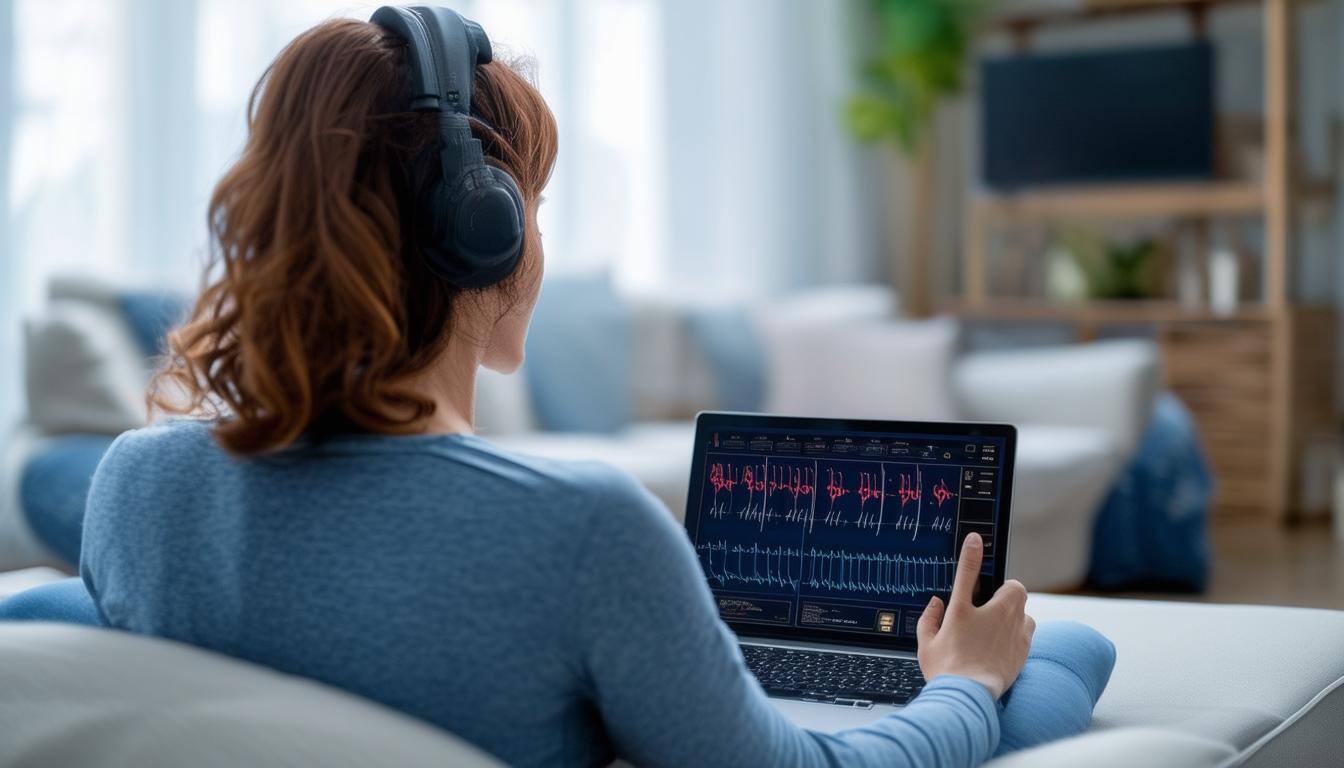Remote Neurofeedback (Protocol-Based Neurofeedback)
-
Overview: This approach involves using neurofeedback devices at home under the guidance of a practitioner. It typically requires an initial brain map (QEEG) to assess your brain's electrical activity and identify any dysregulations. Based on this assessment, the practitioner sets specific protocols to target your brain's unique patterns.
-
How It Works:
- Assessment: A QEEG is conducted to map brain activity.
- Protocol Design: The practitioner designs a training protocol based on the QEEG results.
- Training Sessions: The user engages in sessions where the system provides feedback to train the brain towards desired patterns.

-
Customization: Highly individualized, with protocols tailored to the user's specific brain activity and adjusted as needed.S
-
Supervision: Requires ongoing oversight by a trained practitioner to monitor progress and adjust protocols.
NeurOptimal® Home Neurofeedback
-
Overview: NeurOptimal® is a fully automated, non-linear dynamical neurofeedback system designed for personal use without the need for practitioner oversight. It does not require a QEEG or brain mapping before starting.
-
How It Works:
- Real-Time Monitoring: Sensors read brain activity during the session.
- Feedback Delivery: The system provides real-time feedback through auditory interruptions when it detects turbulence in brainwave activity, prompting the brain to self-correct.
- Self-Optimization: The brain uses this information to reorganize itself, enhancing overall functioning without targeting specific issues.
-
Customization: No manual customization is needed; the system adapts to the user's brain activity in real-time.
-
Supervision: Designed for independent use at home, with no need for practitioner intervention.
Key Differences
| Aspect |
Remote Neurofeedback |
NeurOptimal® Home Neurofeedback |
| Approach |
Protocol-based, targeting specific brainwave patterns identified through QEEG. |
Dynamical, non-linear approach focusing on overall brain optimization without prior brain mapping. |
| Supervision |
Requires ongoing practitioner oversight for protocol adjustments. |
Fully automated; no practitioner needed. |
| Customization |
Tailored protocols based on individual QEEG assessments. |
System adapts in real-time to the user's brain activity without manual adjustments. |
| Ease of Use |
More complex setup requiring professional guidance. |
User-friendly, designed for home use without specialized training. |
| Focus |
Aims to address specific neurological issues or symptoms. |
Enhances overall brain resilience and flexibility. |

Which Is More Suitable?
-
Remote Neurofeedback: May be appropriate for individuals seeking to address specific neurological conditions under professional supervision.
-
NeurOptimal® Home Neurofeedback: Ideal for those looking to enhance general mental fitness, reduce stress, and improve overall well-being with a convenient, user-friendly system.
Several companies offer protocol-based neurofeedback systems designed for remote use, enabling clients to undergo neurofeedback training at home under professional supervision. Notable examples include:
Myndlift
Myndlift provides a user-friendly platform that combines a brain-sensing headband with additional sensors to measure and train brainwaves. Clinicians can customize protocols, monitor EEG in real-time, and adjust training settings remotely, allowing clients to train at home with professional oversight.
Myndlift
EEGer™
EEGer™ offers remote-use systems similar to their clinical setups, utilizing the same hardware and software for neurofeedback functions. These systems are designed for supervised home use, requiring initial training by a therapist to ensure proper operation.
Eeger Support
Divergence Neuro
Divergence Neuro provides solutions for creating remote neurofeedback programs, emphasizing the use of modern, user-friendly EEG devices suitable for home use. Their platform allows clinicians to monitor client progress and adjust protocols as needed, facilitating flexible and personalized care.
Divergence Neuro
NewMind
NewMind offers neurofeedback software that supports remote monitoring and administration of neurofeedback training. Their platform includes features for protocol configuration and real-time dashboards, enabling clinicians to oversee remote users effectively.
New Mind
BrainPaint
BrainPaint allows for home training with remote oversight by a trainer who monitors and adjusts protocols to ensure they are correctly set. This system requires professional supervision to maintain effectiveness and safety during home use.
Neurofeedback Training Blog
These companies have developed systems that facilitate remote neurofeedback training, combining technological advancements with professional supervision to ensure clients receive effective and personalized care in the comfort of their homes.